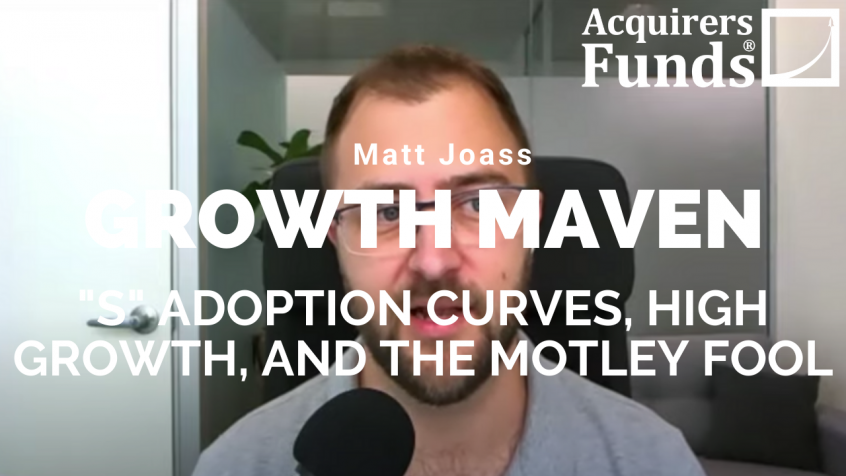During his recent interview with Tobias, Matt Joass from Maven Funds discussed Fundamental Inflection Points. Here’s an excerpt from the interview:
Matt: But thankfully, the new website at least you can filter by industry, which is one of the main things I’m trying to chuck out, like the mining explorers, and just look at all the others. I think that’s a good way to keep abreast at least because so many small companies, that it helps you like catch if someone’s– I think about it like a fundamental inflection point.
I guess that’s probably when I started making the migration from value into this kind of hybrid, is trying to find not where the share price is going to rally. It’s not like a typical catalyst, but where the fundamentals are going to improve a lot and trying to identify those spots as an opportunity to get involved with a business.
Tobias: I saw you had a post on your site about that. Can you just talk about that a little bit? How do you go about doing that identification?
Matt: Yeah. First, just having a really good grounding of what the business is doing and how its model works and you can identify at different times, but there’s a whole lot of different. It’s kind of a hidden growth often as part of it.
Maybe they’ve got a like a really fast-growing product or segment that’s been hidden by another that’s slower. Maybe it’s a new distribution agreement. As long as it’s not like a very pump-y management team that’s overselling, then people overreacting, often that doesn’t get appreciated.
If you can talk to management really understand, this is like a real agreement, where they’re putting like thousands of salespeople behind it, that’s a huge fundamental change. Then validating that as well talking to people in the industry. Yeah, there’s a whole lot basically, like launching a new product or some area that’s tipping [unintelligible [00:27:40].
Often operating leverage, frankly, is just when it’s starting to tip. Often once it’s tipping into cashflow positive, people don’t appreciate operating leverage when you’re going from losing $5 million to losing $1 million. When you go from losing $1 to $3 million positive, and suddenly everyone’s like, “Wow,” and then the next year that happens, so there’s just understanding the business model and the unit.
Tobias: Before you said it, I was going to mention that Ian Cassels– I think it was Ian, I don’t want to label him if it’s not, but I think he said something similar that he likes to– often you can find these companies that the best time to buy them is one or two or three quarters before they flip into cash flow earnings positive because they look like a loser until that point and all of a sudden, they pop up on all these screens because they’re making money, and that’s a good kind of inflection point for the businesses because that operating leverage is so massive at that point.
Matt: It’s a funny one, I think, particularly here, maybe people have always been much more focused on profitable businesses, so it’s like suddenly just into the universe. I think there’s just, I don’t know, there’s a lot, maybe it’s changing a bit more now, but people were– there’s a heap of dividends here as well.
It’s like your tax advantage to paying a dividend, you can have this hypergrowth tech company being asked when you’re going to pay a dividend and it’s like, “What are you talking about? Why would you want to pay a dividend?” Yeah, so I think that tipping into profit is suddenly like now it’s a real company in a lot of people’s eyes. Yeah, I think that’s just gets a rerate, typically.
You can find out more about Tobias’ podcast here – The Acquirers Podcast. You can also listen to the podcast on your favorite podcast platforms here:
For all the latest news and podcasts, join our free newsletter here.
Don’t forget to check out our FREE Large Cap 1000 – Stock Screener, here at The Acquirer’s Multiple:




